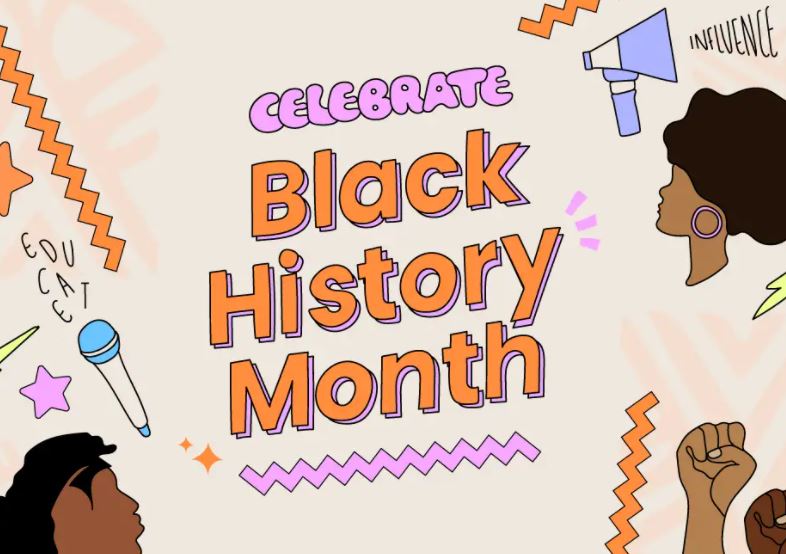February Newsletter – Celebrate Black History Month!
Communication DOs and DON’Ts for Black History Month
Meet Karis!
We want to extend a warm welcome to Karis Hortin, IABC DC’s new social media manager. Karis earned a bachelor’s degree in business administration in December.
Karis has been working as a social media manager and strategist for churches, small businesses, and nonprofits for about a year. She dove headfirst into the social media/digital world when she started her YouTube channel three years ago. Through her channel, she helps teen girls navigate this crazy life.
Karis is also a certified life coach for teens. She works 1:1 with teen girls all over the country. She uses her knowledge of social media to help organizations because she believes everyone has value to add to the world and that social media gives us the opportunity to reach more people than we can ever imagine.
Karis looks forward to working with and learning from IABC DC.
All In for All-Hands Meetings
Is your quarterly all-hands meeting a snoozer? This is a common occurrence, and often with a root cause—the content doesn’t connect to the staff. I turned the ship around on all-hands meetings at my former workplace, and you can too!
Firstly, employees must be able to relate to everything they’re hearing. Communicators can help leadership and the meeting’s presenters find ways to connect dots between corporate outcomes and staff roles. This could mean mentioning departments and/or individuals by name when touting a specific success. We also added a Kudos section at the end of each all-hands meeting. Kudos don’t need much structure—you’d be surprised how much love can be generated by an open microphone and an invitation to come up for shout-outs.
Next up is good old transparency. Staff can smell it when they’re only being fed happy, pleasing numbers and headlines. They crave, and deserve, the real information. While every single deep data point may not be appropriate for this meeting, leadership will go a long way in building trust with employees by being vulnerable. Share some ickiness, give it context, and list the plan for repair. We added a Q&A session to each meeting, a previously taboo practice for our company culture. Leadership received anonymous staff questions a few days before the meeting, allowing them to prepare thorough responses. We also began live Q&A at each meeting—again, the C-suite must embrace vulnerability.
How can you ensure these elements are getting into each all-hands meeting? Working with consultant Angelo Ioffreda of io spark communications, I restructured the agenda template for each meeting: Performance, Purpose, and People. It’s up to you and leadership to decide which updates go in which section. There are many storytelling opportunities for real information, for connecting activities to corporate values, and for acknowledging staff. Persuade management to include more junior staff presenting on an achievement they’re proud of.
Lastly, start measuring the all-hands meetings’ impact if you aren’t doing so already. I began sending out a quick survey to all staff within 30 minutes of the meetings’ end, and over time, was able to show leadership consistent and high scores. In addition to an open-ended question on how future meetings can be improved, we asked staff to rate their level of agreement with statements including:
-
I have a better understanding of our current priorities
-
The meeting had interesting and useful information
-
I felt welcome to ask questions
-
There was more information I wanted to hear about
-
I enjoyed the meeting
Culture change takes time—but streamlining and restructuring your all-hands meeting with staff in mind is a winning investment for any company.
-Eve Angerosa, IABC DC | eve.angerosa@gmail.com
The Fab Five: How to Celebrate Black History Month on Social Media
Each month, we share a top five list of ideas to help you advance your career, have fun, or learn something new. This month we’re looking at making your marketing more inclusive. Dante Lewis at later.com has listed five ways to celebrate Black History on Social Media:
- Creator Spotlights and Q&As: Spotlighting Black creators, entrepreneurs, and Black-owned brands in your industry can be a great way to introduce your audience to people and businesses they can support.
- Pass the Mic:The idea behind “passing the mic” is to use your platform to elevate and amplify Black stories—in their own words. Think of it as letting them take centre stage, while you support from the sidelines.
- History Lessons and Noteworthy Facts: History lessons are a great way to celebrate Black History Month on social media. While most brands will think to spotlight Martin Luther King Jr. or Rosa Parks, we encourage you to be proactive, do your research, and go beyond the obvious choices.
- Quote Posts: Inspirational quote posts are frequently shared on social media because they can drive engagement for brands and creators alike. And for Black History Month, there are so many inspirational Black voices and leaders to spotlight.
- Advocate for Change: Black History Month is the perfect opportunity to raise awareness about local community initiatives and offer ongoing monetary support. You can promote an exclusive product and donate a portion of the proceeds to a social cause.
 Happy February, IABC DC! This month marks Black History Month, a tribute to Black men and women who have made significant contributions to America and the rest of the world in the fields of science, politics, law, sports, the arts, entertainment, and many other fields. As communicators, we want to ensure this month is not just acknowledged in our workplace, but respected and celebrated with intentional engagement. Communications agency Stratacomm offers guidance on do’s and don’ts:
Happy February, IABC DC! This month marks Black History Month, a tribute to Black men and women who have made significant contributions to America and the rest of the world in the fields of science, politics, law, sports, the arts, entertainment, and many other fields. As communicators, we want to ensure this month is not just acknowledged in our workplace, but respected and celebrated with intentional engagement. Communications agency Stratacomm offers guidance on do’s and don’ts:

